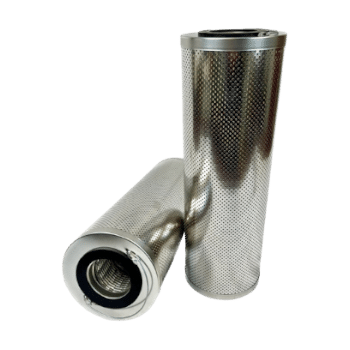Direct Replacement for Western E0410V1U03 Hydraulic Filter Element
$99.75
This ISO Filtration hydraulic filter element is a direct replacement for the Western E0410V1U03 hydraulic filter element in form, fit, and function. The optimized filter media provides fine filtration, long life, and high dirt-holding capacity.
- Made in America for assured performance
- Quality ISO 9001:2015 certified manufacturing
- High-performance filter media tested to ISO 16889 protocols
LIVE UPS or LTL rates calculated on the checkout page

Specs
| O.D. | 5.97" |
|---|---|
| I.D. Top | 4.13" |
| I.D. Bottom | 4.13" |
| Length Overall | 8.14" |
| Construction Type | Double Open End, Optimized Microglass |
| Efficiency | 3 Micron; Beta 3 = 1000 per ISO 16889 |
| Gasket Material | Viton |
| Wire Support | Yes |
| Max Operating Pressure | 160 PSID Collapse |
| Max Temp | 230 Degress F |
| Weight Each | 4 |
| Carton Qty | 1 |
| Condition | New |
Direct replacement for Western E0410V1U03 suction strainer filter in form, fit, and function. Made in America with ISO 9001:2015 compliant manufacturing for assured quality. Optimized mesh media is used for fine filtration, long life, and high dirt-holding capacity.
- 5.97″ OD x 4.13″ ID Top x 8.14″ Length overall
- 3 Micron; Beta 3 = 1000 per ISO 16889
- 160 PSID Collapse
- Scroll down for additional specs






